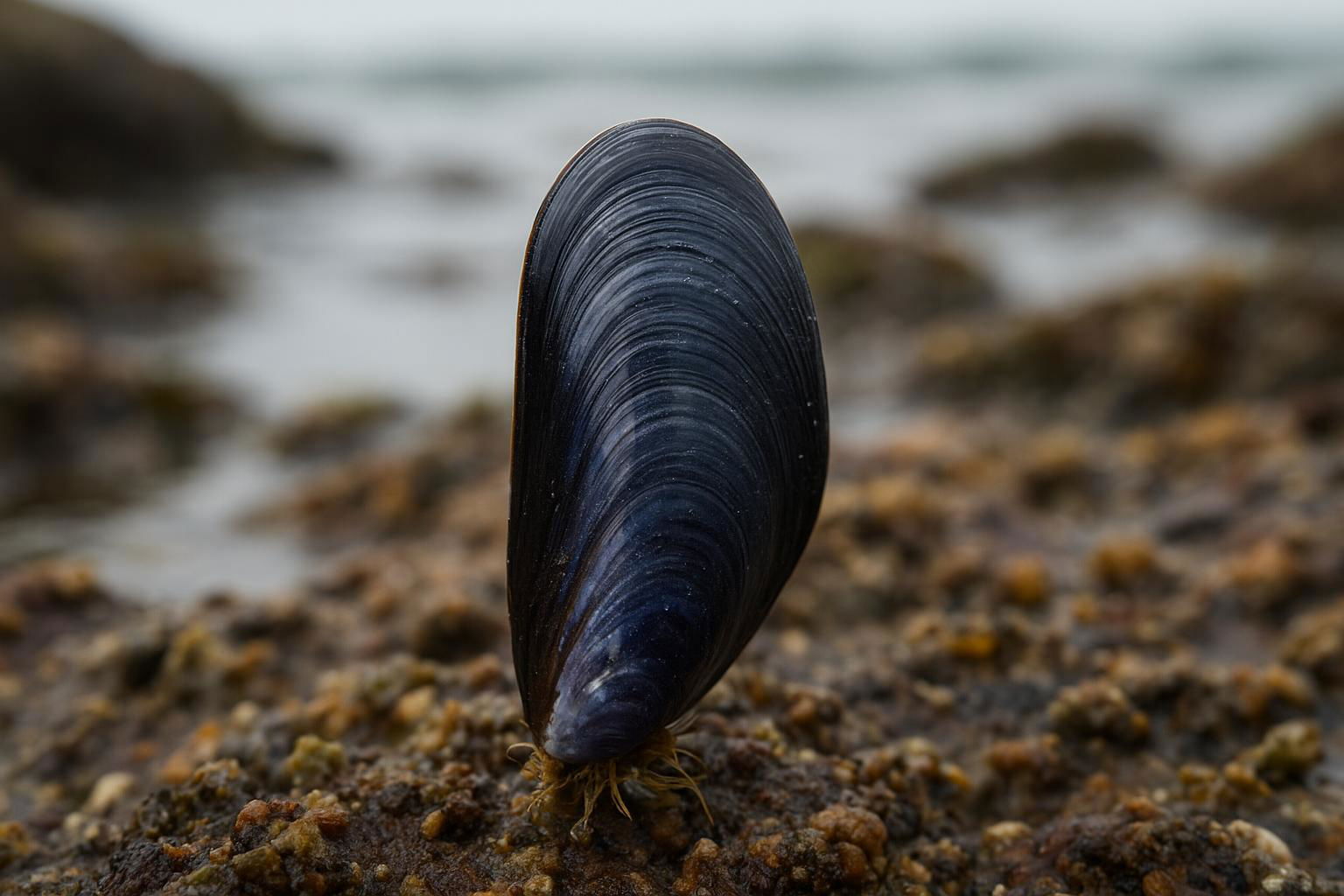
Blue Mussel
Mytilus edulis
The Blue Mussel, scientifically known as Mytilus edulis, is a bivalve mollusk found in temperate to polar coastal waters across the North Atlantic Ocean. Distinguished by their smooth, blue-black to dark brown shells, these mussels can grow up to 10 centimeters in length. Their shells are typically elongated with a pointed beak and feature fine concentric growth lines. Blue Mussels thrive in intertidal and shallow subtidal zones, often forming dense beds attached to rocks, pilings, and other hard substrates via strong, thread-like structures called byssal threads.
As filter feeders, Blue Mussels play a vital ecological role by filtering plankton and organic particles from the water, thereby improving water quality and clarity. They are a sustainable seafood choice, frequently farmed for human consumption, and are valued for their nutrient-rich profile, including high levels of protein, omega-3 fatty acids, and essential minerals.
Blue Mussels are adapted to withstand varying salinities and temperatures, making them resilient inhabitants of fluctuating coastal environments. Their lifecycle involves external fertilization, with spawning peaks in spring and summer, leading to free-swimming larvae that eventually settle and metamorphose into juvenile mussels. This species is an important component of marine biodiversity, supporting a range of predators, including sea stars, birds, and humans, and contributes significantly to the socio-economic fabric of coastal communities.

 All Species & Breeds
All Species & Breeds
 Highland Cattle
Highland Cattle
 Miniature Donkeys
Miniature Donkeys
 All Species Directory
All Species Directory
 Highland Cattle in Virginia
Highland Cattle in Virginia
 Miniature Donkeys in Texas
Miniature Donkeys in Texas












